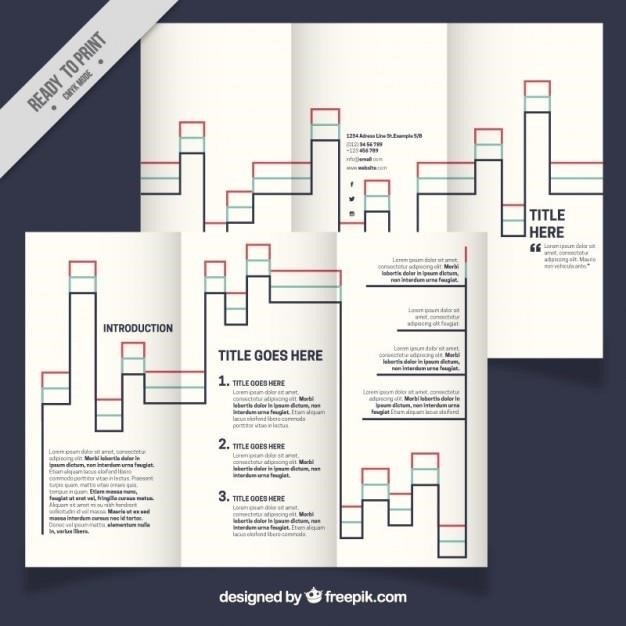The Frozen River Book Club Questions⁚ A Comprehensive Guide
This guide offers insightful questions for enriching discussions of Ariel Lawhon’s “The Frozen River‚” exploring themes of justice‚ gender‚ midwifery‚ and 18th-century Maine life. Downloadable PDF versions of these questions are readily available online to facilitate your book club meeting.
Initial Impressions and Historical Context
Begin your discussion by sharing initial reactions to The Frozen River. Did the story’s pacing and narrative style resonate with you? What were your immediate impressions of Martha Ballard and her world? Consider the historical setting of 1789 Hallowell‚ Maine. How accurately do you believe Lawhon portrays the time period‚ based on your prior knowledge or research? Discuss any surprises or unexpected aspects of daily life‚ social norms‚ or societal structures depicted in the novel. How did the historical context influence your understanding of the characters’ motivations and actions? Did the historical setting enhance or detract from your enjoyment of the story? Explore the blend of historical fact and fictional narrative. Were you aware of Martha Ballard’s real-life diary before reading the novel? How did knowing this impact your experience?
Character Analysis⁚ Martha Ballard and Key Figures
Delve into a detailed analysis of Martha Ballard‚ the novel’s protagonist. Consider her strengths‚ weaknesses‚ and motivations. How does her role as a midwife shape her perspective and actions? Explore the complexities of her relationships with other key characters‚ such as her family members‚ Rebecca‚ and the individuals involved in the central mystery. Discuss the development of Martha’s character throughout the narrative. Does she undergo significant changes or transformations? How does Lawhon use Martha’s experiences to explore themes of gender‚ societal expectations‚ and resilience? Analyze the supporting characters. What roles do they play in the overall narrative? How do their individual stories contribute to the broader themes of the novel? Consider the motivations and actions of the secondary characters. Were their actions believable and consistent with their personalities?
Themes of Justice‚ Gender‚ and Societal Norms
Examine the novel’s exploration of justice within the context of 18th-century Maine. How does the legal system function‚ and how does it impact the lives of women? Discuss the concept of justice as it pertains to the central crime and its aftermath. Consider the societal norms and expectations placed upon women during this time period. How do these norms affect Martha’s life and choices? Analyze the power dynamics between men and women within the community and how these dynamics influence the unfolding events of the story. Explore the theme of gender inequality and the ways in which Martha challenges or reinforces these societal structures. Discuss the different perspectives on justice presented within the novel. Are there differing opinions on how justice should be served? How do these different perspectives contribute to the overall narrative? Finally‚ consider the intersection of gender and justice. How do gender roles shape the experience of justice (or injustice) for the characters in the story?
The Role of the Diary and Historical Accuracy
Discuss the significance of Martha Ballard’s diary as a primary source and its influence on the novel’s narrative. Analyze how Lawhon utilizes historical records to shape the story while acknowledging the inherent limitations of historical sources and the creative license taken by the author. Consider the balance between historical accuracy and fictional embellishment in the novel. Does the author successfully blend historical fact with fictional elements‚ or does this blend compromise the historical integrity of the narrative? Explore the ways in which the diary entries are integrated into the plot and how they contribute to the overall structure and pacing of the story. Discuss the diary’s role in revealing Martha’s perspective‚ personality‚ and experiences‚ and how this perspective shapes the reader’s understanding of 18th-century life and female experiences. Consider the reliability and limitations of the diary as a historical record. What aspects of Martha’s life might be omitted or misrepresented in the diary? How does the novel address these limitations?
Narrative Structure and Effectiveness
Analyze the novel’s narrative structure‚ noting the use of flashbacks and how they contribute to the overall plot. Discuss the effectiveness of the dual timelines and their impact on the reader’s understanding of the characters and events. Consider how the narrative structure enhances or detracts from the suspense and mystery elements of the story. Does the use of flashbacks create a satisfying narrative arc‚ or does it feel disjointed or confusing? Explore the pacing of the narrative—are there any sections that feel rushed or slow? How does the author control the release of information to the reader‚ and how does this affect the overall reading experience? Examine the use of point of view. Does the narrative primarily focus on Martha’s perspective‚ or are other characters’ perspectives equally explored? How does this choice affect the reader’s understanding of the events and characters? Discuss the effectiveness of the ending. Does it provide a satisfying conclusion to the story‚ or does it leave the reader with unanswered questions?
Exploring the Setting⁚ 18th-Century Hallowell‚ Maine
How does Lawhon’s depiction of 18th-century Hallowell‚ Maine‚ contribute to the overall atmosphere and themes of the novel? Discuss the significance of the frozen Kennebec River as a setting and symbolic element. Analyze the portrayal of daily life‚ social structures‚ and cultural norms in Hallowell. How accurate do you believe the depiction of 18th-century Maine is? What research‚ if any‚ did you undertake to learn more about the historical context? Did this research enhance your understanding and enjoyment of the novel? Consider the impact of the setting on the characters’ lives and actions. How does the environment shape their decisions and interactions? Discuss the use of descriptive language to create a vivid sense of place. How effectively does the author transport the reader to 18th-century Maine? Consider the role of the physical setting in the development of the plot. How does the setting contribute to the mystery and suspense? Does the setting play a crucial role in the resolution of the central conflict?
Family Dynamics and Loyalty in the Face of Adversity
Explore the complexities of familial relationships depicted in “The Frozen River.” How do family dynamics influence the characters’ actions and decisions throughout the novel? Analyze the relationships between Martha and her children‚ her husband‚ and other family members. Discuss the challenges and conflicts that arise within families due to social pressures‚ secrets‚ and moral dilemmas. How does the concept of loyalty‚ or its absence‚ affect the unfolding of the plot? Consider instances where characters demonstrate unwavering support for one another‚ and contrast them with situations where loyalty is tested or broken. How do familial bonds shape the characters’ responses to the central mystery and its aftermath? Does the novel suggest that family is a source of strength and comfort‚ or a source of conflict and constraint? Explore the ways in which family secrets and hidden truths impact the relationships portrayed. How do these secrets shape the characters’ identities and their interactions with others? What are the long-term consequences of these family dynamics and the choices made by family members?
The Impact of Puritanical Shame Culture
Examine the pervasive influence of Puritanical shame culture on the characters’ lives and choices within the narrative of “The Frozen River.” How does this cultural context shape societal expectations and behaviors‚ particularly concerning women and their roles? Analyze the ways in which shame and guilt are used as tools of control and repression. Consider how these societal pressures impact the characters’ ability to speak openly about their experiences and seek justice. Discuss specific instances where characters’ actions or decisions are directly influenced by the fear of social condemnation. How does the novel portray the internal conflicts experienced by characters grappling with the constraints of Puritanical morality? Explore the different ways in which individuals respond to the oppressive aspects of this cultural system. Do some characters actively challenge or resist the prevailing norms‚ while others conform to them? Consider how the novel uses the concept of shame to explore broader themes of justice‚ gender inequality‚ and the complexities of human relationships in a restrictive societal context. How effectively does Lawhon depict the lasting impact of Puritanical ideals on individuals and the community?
Discussion on Midwifery and Healing Practices
Delve into the intricacies of midwifery and healing practices in 18th-century Maine as depicted in “The Frozen River.” Analyze Martha Ballard’s role as a midwife and healer‚ examining the skills‚ knowledge‚ and challenges she faces. Compare and contrast the medical practices of the time with modern approaches. Discuss the social standing and limitations placed upon women in the medical field during this era. How does the novel portray the balance between traditional folk remedies and more formal medical knowledge? Consider the prevalence of herbal remedies and other natural healing methods used by Martha and other characters. Analyze the ways in which the novel depicts childbirth and other medical events‚ exploring the risks and realities faced by women in the 18th century. Discuss the limitations of medical technology and knowledge available at the time. How does Martha’s experience as a midwife inform her investigation into the central mystery of the novel? Explore the novel’s portrayal of the relationship between midwifery and women’s empowerment‚ or conversely‚ oppression. Finally‚ evaluate the novel’s accuracy in representing the historical realities of 18th-century medical practices and the role of women within this field.
Comparing The Frozen River to Other Works by Ariel Lawhon
Having read The Frozen River‚ how does it compare to Ariel Lawhon’s other novels‚ such as I Was Anastasia and Code Name Hélène? Consider the narrative styles employed; are there similarities or significant differences in Lawhon’s approach to storytelling across these works? Analyze the thematic consistencies; do recurring themes emerge regarding historical settings‚ female protagonists‚ or explorations of justice and societal norms? Examine the character development; how do the protagonists in The Frozen River compare to those in Lawhon’s other books in terms of strength‚ resilience‚ and agency within their respective historical contexts? Discuss the level of historical research evident in each book; does Lawhon maintain a consistent level of meticulous detail and accuracy across her works‚ or does her approach vary? Explore the pacing and structure of the narratives; how does the unfolding of the plot and the use of flashbacks differ between The Frozen River and Lawhon’s other novels? Finally‚ how do the overall tones and moods of these novels differ‚ and how does this contribute to their unique impact on the reader?
Further Research and Enrichment Activities
To deepen your understanding of The Frozen River‚ explore primary sources such as Martha Ballard’s diary entries. Many online resources offer excerpts and analyses of her writings‚ providing valuable context to Lawhon’s novel. Research the historical context of 18th-century Hallowell‚ Maine‚ focusing on aspects like social structures‚ gender roles‚ and legal systems. Consider visiting historical sites or museums related to this period and location for a more immersive experience. Investigate the practices of midwifery in the 18th century‚ comparing and contrasting them with modern obstetrics. Explore the prevalent Puritanical shame culture of the era and its impact on individuals and communities. For a broader perspective‚ research other works of historical fiction set in similar time periods or geographical locations. Consider watching documentaries or reading non-fiction accounts related to 18th-century life in New England. Engage in discussions on the ethics of historical fiction and the responsibilities of authors when adapting real-life events into narrative fiction. Finally‚ discuss how Lawhon’s fictional narrative illuminates the lives and experiences of women during this historical period.








